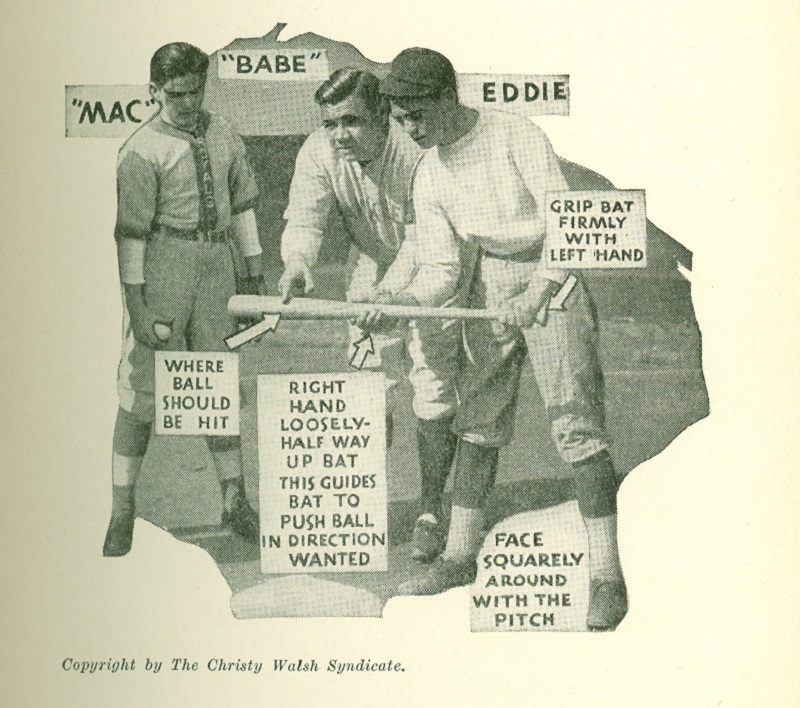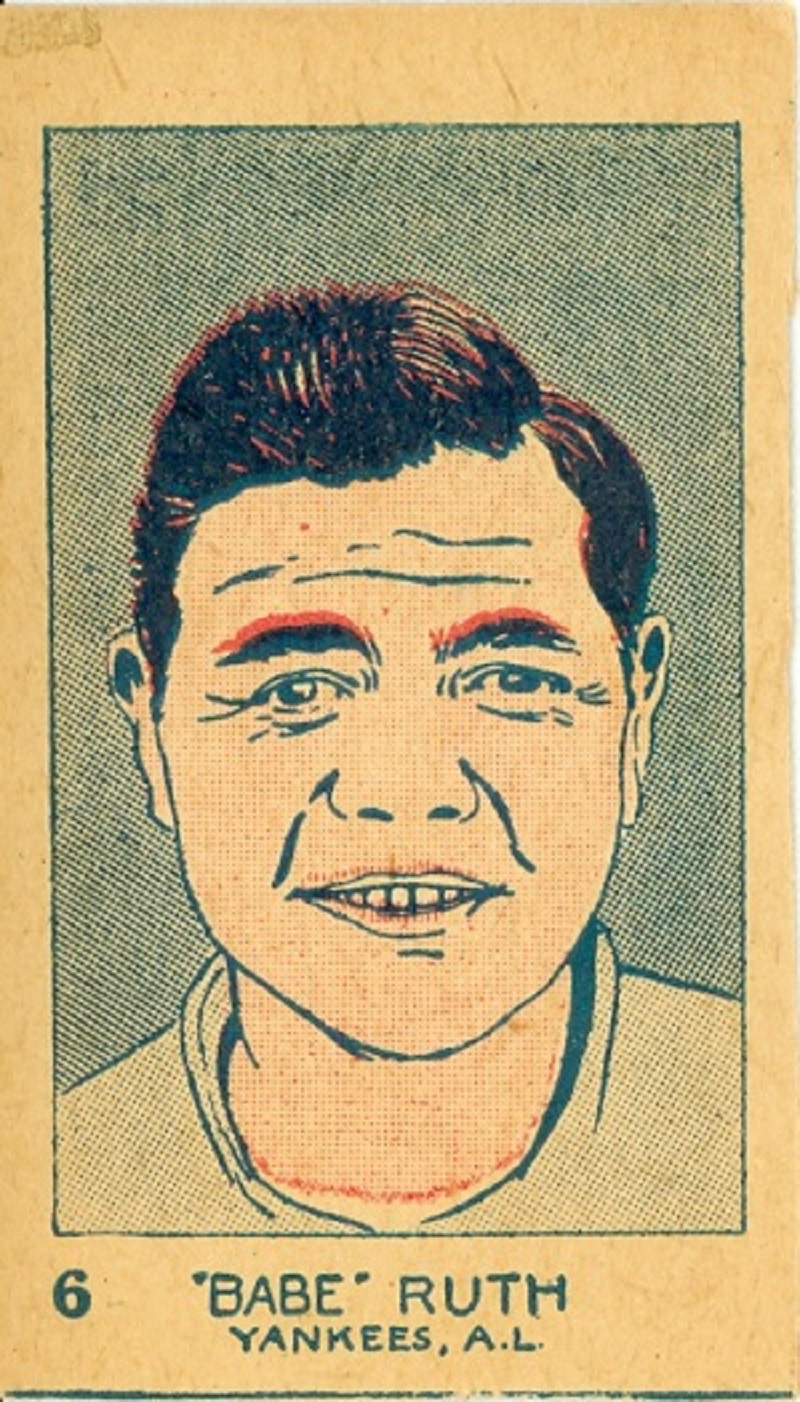University Libraries

April 27: National Babe Ruth Day
By Will Sautter
Babe Ruth, one of the most recognizable baseball players and American sports figures in history, made the incredible transition from one of the game’s best pitchers to one of the game’s most feared sluggers. Tales from his career and his complicated reputation have helped Ruth’s legacy endure since he last took a swing 84 years ago.
For Babe Ruth Day on April 27, let us look back at the player, the stories and the man.
early career attracts fans to the sport
Babe Ruth was born George Herman Ruth Jr. in Baltimore Feb. 6, 1895. At the age of 19, he signed with the Orioles, the local minor league club, and soon after was sent to the Boston Red Sox. Primarily a pitcher at the time, Ruth enjoyed six years of success at the Major League level. In his final two seasons with the Red Sox, he led the American League in home runs and saw a transformation from a dominant pitcher who occasionally batted to a full-time right fielder renowned for his tape measure home runs. After his controversial trade to the New York Yankees, Ruth fully established himself as one of the game’s premiere sluggers and reinvigorated the national popularity of America’s pastime. He would spend the next 15 years dismantling opposing pitchers and, with legendary Yankee first baseman Lou Gehrig, wreaking havoc during the postseason.
In these 15 years, Ruth led the American League in home runs 10 times, and the Yankees took four titles and three additional pennants. This gave Ruth seven World Series titles overall, having won thrice with the Red Sox. Ruth’s career ended rather unceremoniously with the Boston Braves in 1935, where he retired midseason with stats pitiful for even a mediocre player. When it was all said and done, Babe Ruth hit 714 home runs (a total surpassed just twice); posted a .342 batting average (10th-best in baseball history); drove in 2,213 runs (second to Hank Aaron); and still holds the record for highest slugging percentage at .690. Although he was only a pitcher for six seasons, he posted a 94-46 win-loss record with a 2.28 career ERA.
A talent with a temper
As a player, Babe Ruth was known for a fiery temper and poor on-field behavior. The best example of this came in 1917 at the beginning of a game against the Washington Senators. Ruth walked the first batter of the game on four consecutive pitches, argued with the umpire, was ejected, punched the umpire and was forced off the field by team members and police. Pitcher Ernie Shore came on in relief, saw the runner he inherited from Ruth thrown out attempting to steal second, then retired all 26 batters he faced. This not only gave Shore a perfect outing; it gave him and Ruth one of the few combined no-hitters in Major League history.
Memorable showmanship
Two bits of lore surrounding Babe Ruth in the World Series involve his predicting home runs. Despite being under scrutiny for his behavior off the field, including heavy drinking, partying, and fooling around, Ruth was the favorite player for children all over the country. He was also commended for his kindness toward children, often visiting orphanages and hospitals during the season. An 11-year old boy named Johnny Sylvester, in serious condition following a horse riding accident and ensuing infection, was given autographed baseballs during the 1926 World Series by the two participating teams: the eventually victorious St. Louis Cardinals and the New York Yankees. On the Yankees’ ball, Babe Ruth wrote next to his name a promise that he would hit a home run for the boy. The next game, Ruth hit three home runs. After the press learned of the story, newspapers began reporting that Ruth’s fulfillment of his promise led to a miraculous improvement in the boy’s health. Johnny recovered and went on to live an accomplished life, including serving in the U.S. Navy during World War II.
The other World Series story around Ruth comes from Game 3 of his final World Series. In 1932 against the Chicago Cubs and facing pitcher Charlie Root, Babe Ruth supposedly “called his shot” and hit the very next pitch for a home run in the same direction he had pointed. The home run was Ruth’s second of the day and helped lead the Yankees to a win before sweeping the Cubs with a victory the next day. The ambiguity surrounding the gesture stands with Ruth’s actual intention. While sportswriters and fans claimed that he was predicting the home run, players speculate that it was toward Root, whose back was turned, and some historians argue that it was actually toward the Cubs’ dugout, where players were relentlessly bashing Ruth during his at-bat. Regardless of the intent, the fact that the blast went for more than 450 feet in the same direction that his finger may have indicated has established this home run as Babe Ruth’s most famed.
Come see some Babe Ruth artifacts
University Archives and Special Collections invites the campus community and the public to stop by and see some of the University’s baseball collection and its Babe Ruth items in particular. These include an autographed instructional book from Ruth about playing baseball; an autographed baseball featuring his and other Hall of Famers’ signatures; a few other books and sources about him; and a 1926 baseball card of the Babe.
— Will Sautter of Gettysburg, Pennsylvania, is an English major with a film studies minor who works part time in the University Archives and Special Collections. He pitched and played first base for 12 years and was an umpire in high school. He graduates from UD in May.

Babe Ruth baseball card
Babe Ruth baseball card

